What the Differences Between the Giant Panda and Other Bears Are
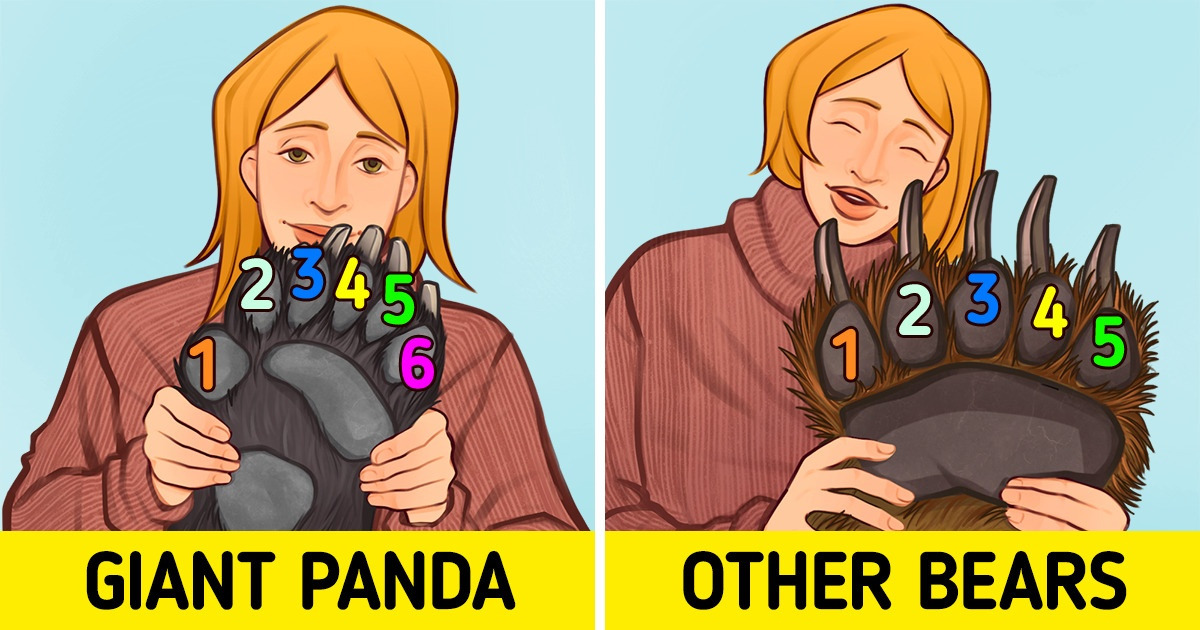
Giant pandas and other bears belong to the same family, but they feature some striking differences. For example, giant pandas eat plants, while brown, black, and other bears eat fruit and meat, for the most part.
In this guide, 5-Minute Crafts will point out the main differences between giant pandas and other bears.
1. Compare their colors.
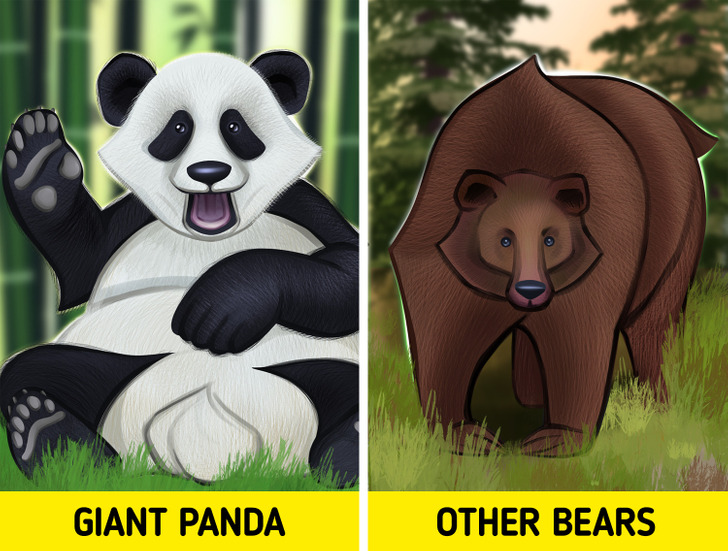
You can differentiate giant pandas from other bears by their colors.
- Giant pandas have black and white patterns that are similar throughout their bodies. Moreover, they usually have black spots framing their eyes, while most of their head is white.
- Other bears are typically single-colored. They can be black, white, brown, reddish, etc. However, note that sometimes they may feature faded shades of their original color.
2. Know where they live.
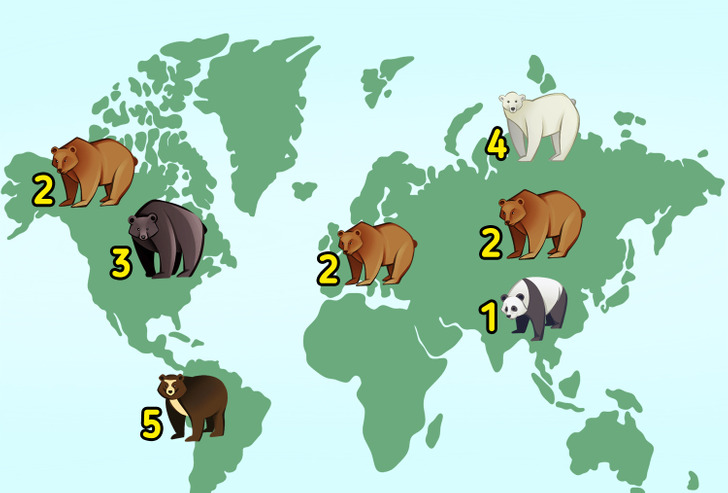
Another key distinction between giant pandas and other bears is their natural habitat.
- Giant pandas (1) are native to Southwest China. They live in temperate forests in the mountainous regions of Sichuan, Gansu, and Shaanxi.
- Other bears inhabit various habitats in North and South America, Europe, and Asia. For example, brown bears (2) live in North America, Europe, the Himalayas, and Siberia. On the other hand, black bears (3) live in North America, polar bears (4) live in the Arctic, and Andean bears (5) live in South America.
3. Learn what they eat.
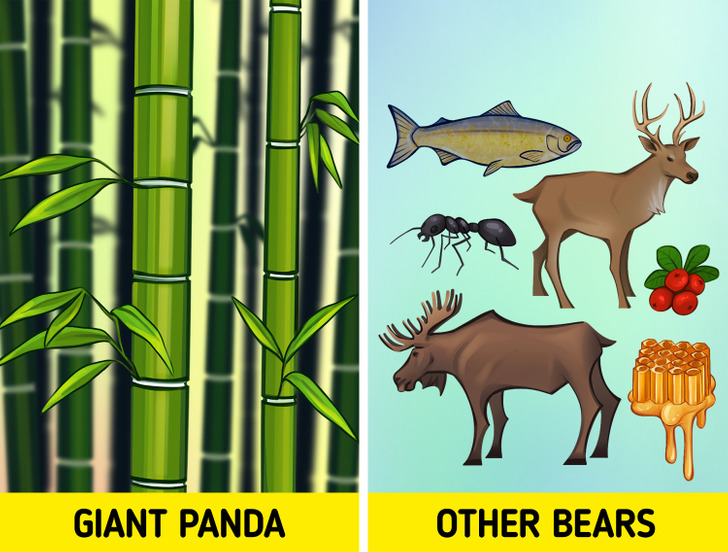
One of the greatest distinctions between giant pandas and other bears is their diet.
- Giant pandas are herbivores, or plant-eaters, that live on bamboo for the most part. They might accept small quantities of fruit, honey, eggs, or fish. But that is far from certain since they are very picky.
- Other bears are basically omnivores because they feed on meat and plants. Black, brown, polar, and other bears prefer eating meat, in general. And depending on availability, they hunt deer, moose, fish, and seals, among other prey. They also eat honey, berries, and even insects, including ants and bees.
4. Find out whether they hibernate in winter.
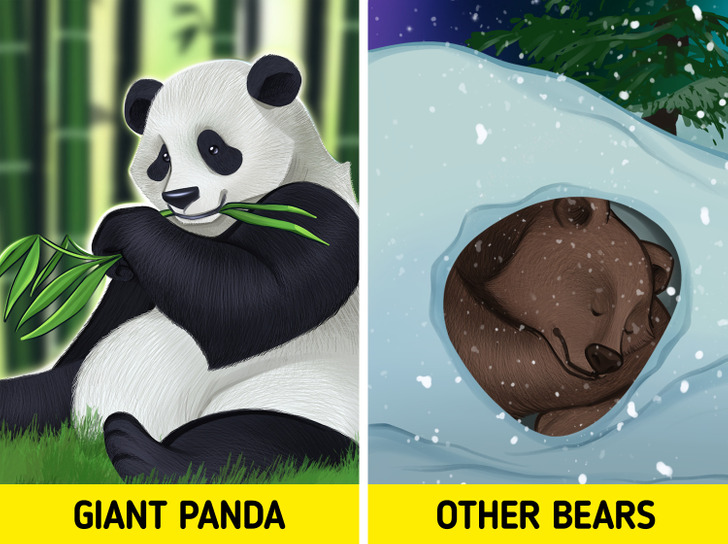
Bears typically hibernate in winter, but giant pandas don’t.
- Giant pandas don’t hibernate in winter, and their diet plays a big part in that. Since bamboo doesn’t provide enough nutrients for prolonged sleep, giant pandas need to stay awake in winter to sustain themselves.
- Most other bears hibernate, at least to some extent, to preserve energy when the food supply is scarce during colder months. To do so, they need to build up their weight, or even double it, during other seasons.
5. Compare their paws.
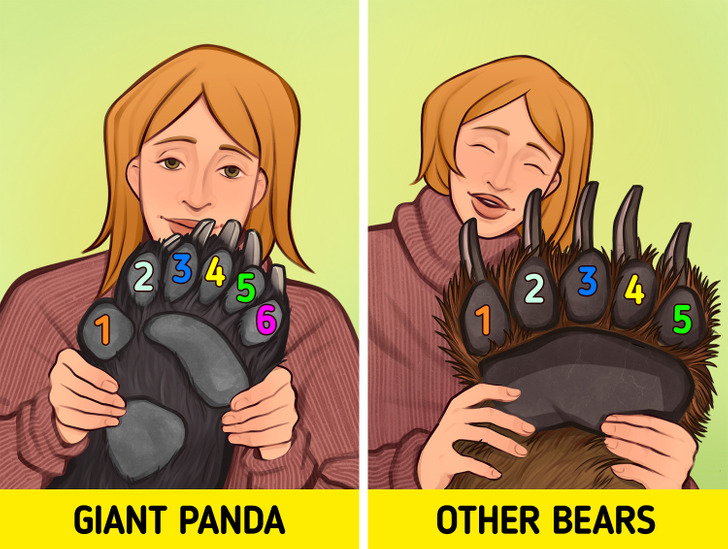
Share This Article